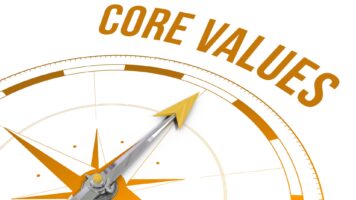The Building Inspectors, The Doctor, and Choosing Responsibility

Personal Development
March 30, 2020
Paula Kiger
Topics
challenges, crisis, leadership lessons, Lessons from History, Responsibility, Taking responsibilityWe are living in a time where “taking responsibility” is the term of the day. Actually, social distancing may get the prize for being the term of the day—but the question of personal responsibility must be a close second.
People are asking who could have spoken up and stopped the spread of the coronavirus beyond China.
Now that the coronavirus is here in the US, the questions have exploded. Some are related to the larger operational issue. Who is going to try to ensure there are enough testing kits available? Who is going to take care of the very difficult job of marshaling enough respirators, masks, and personal protective equipment to keep health care providers safe and patients as medically secure as possible?
On the flip side, there are questions about personal responsibility. Take a look at social media, and you’ll see a discourse that seesaws between the people who flout the rules by continuing to gather socially and the people who frantically beg everyone to stay at home, to protect themselves as well as our older populations and the medically fragile.
What happens when no one steps up?
In my role as an editor at SmartBrief, I recently filled in for a colleague and edited a newsletter that has a target audience of general contractors. One of the stories I handled had to do with an investigation of the October 12, 2019, collapse of the Hard Rock Cafe that had been under construction. Dozens of people were injured and three died. The bodies of two of the deceased are still in the wreckage, which is so unstable that the bodies can’t be retrieved.
Here are a few highlights of the investigation, which focused on the role of the city’s building department:
- Two inspectors have been suspended; they are alleged to have signed off on inspections for the Hard Rock project without visiting the site.
- Another inspector, who is alleged to have signed off on inspections without physically going to the sites, has retired.
- The head of the city’s Department of Safety and Permits at the time of the improperly handled inspections was demoted (however, he has to stay with the department because he’s the only person with the appropriate certification to clear inspections).
Reading this article led me to ask: Did these people not realize that failing to perform their responsibilities properly could endanger human beings? What if they had family members working at the sites in question? Would they have shown up at the site and actually looked at it?
The world needs more Dr. Charleses
I was reading the book Breathless by Eric Chason at the same time I read the article about New Orleans, and I was struck by the behavior of Dr. Anthony Charles, which was the opposite of the building inspectors in New Orleans.
Breathless tells the story of Lillian Chason, a college freshman who became seriously ill after falling sick with the H1N1 flu in 2009. She ended up at the University of North Carolina Medical Center. As her lungs deteriorated, the family agreed that Lillian could be put on ECMO, a breathing apparatus that operates much like heart-lung machines, with a focus on lung function.
At the time, it was quite rare to use ECMO on an adult, and Dr. Charles was one of the few physicians in the US qualified to do it. Lillian’s father (and the book’s author, Eric Chason) talked about how much the family grew to trust Dr. Charles, and how excited he was for Lillian to meet him once she was better.
Two snapshots of Dr. Charles’ approach:
- Dr. Charles came to Lillian’s hospital room late on Thanksgiving afternoon, and he brought his wife, explaining that he wanted her to see his work and understand why he sometimes had to leave home with so little notice. Eric Chason asked Dr. Charles if he ever slept. He replied, “Lillian’s my girl. I have to check up on her.”
- At one point in Lillian’s hospitalization, her mother (Cate) was upset because the radiologists weren’t appropriately shielding her when she had X-rays, which were occurring frequently. When he was summoned by the nurses, he “went right up to [Cate] and asked what was wrong. I was always impressed with how direct he was at dealing with things—he never shied away from facing them.” He then went for a two-hour walk with Cate and discussed her case in detail, along with explaining the challenging politics of a hospital. Lillian was shielded at every X-ray after that.
Eric Chason wrote about Dr. Charles as a leader:
“I had never seen this kind of leadership before and it clearly inspired all those who worked for him to be better, to try to live up to his standards. He had dedicated himself to knowing all he needed to in order to do the job in front of him. He wanted to be the one responsible for making the decisions, the one with the ball.”
Neither of these situations has a happy ending. Lillian Chason passed away on December 16, 2009. As I also mentioned, three people died in New Orleans, and two of them have not had proper burials.
Yet, one situation presented a sterling example of leadership when attention to detail and personal responsibility were called for. The situation in New Orleans appears to have been the opposite.
Dr. Charles told Eric Chason that he “wanted to be the one responsible.” In doing so, he modeled what those reported to him needed to see to fulfill the organization’s standards. I have no doubt lives were saved because of his approach.
The next time you are called upon to be responsible, take a note from Dr. Charles. Show up and face the challenge.





